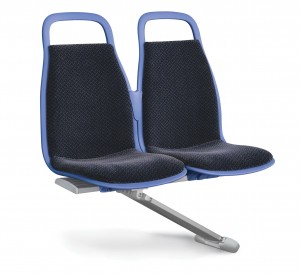By Glenn Swain
This just in: The average weight of Americans has increased in the last 50 years, and it’s having an affect on the transit and motorcoach industry. As the butts of Americans get wider, the size of bus seating is also increasing.
A study released last August by England’s esteemed medical journal The Lancet predicted that roughly half of American men and women will be obese by 2030 if U.S. eating habits are not drastically altered.
So last year it came as no surprise when the Federal Transit Authority announced plans to boost the standard for passenger weight to 175 pounds from 150 and to expand passenger bus floor space from 1.50 to 1.75. The 150-pound guideline was based on the numbers from the National Health Examination Survey, which was conducted during the first years of John F. Kennedy’s administration. One could call it the Camelot days of ideal body weight.
According to the Centers for Disease Control and Prevention, the average weight of men 20 and older is nearly 195 pounds and about 165 pounds for women in the same age range. The new numbers will be pulled from the CDC’s 2008 National Health Statistics Report.
The move by the FTA is a tip of the fat…er…hat toward the reality of weight gain in the U.S.

Currently, transit riders engage in a thigh-to-thigh wrestling match, giving new meaning to the term commuter challenge. Industry experts say the average bus seat is around 17 1/2-inches wide. Grand Rapids, MI-based American Seating now manufacturers a new transit seat that is 18 inches wide and tapered at the top.
“We focused on key areas which include comfort, aging population and people with disabilities, people size, vandalism, maintenance, cleaning and style,” says Gary Thompson, marketing manager for American Seating. “The seat width on our InSight and Vision model offerings results in up to a 20 percent larger sitting area.”
Expect a lot more butts in these seats. According to an American Public Transportation Association study, there could be an additional 670 million passenger trips per year on transit systems if gas prices reach an average $4 a gallon nationally. At $5 a gallon, the association predicts 1.5 billion more passenger trips.
Larger seats pose a problem for transit agencies. A bus only has so much room. Fewer seats could equate in a loss of revenue, not good news for many agencies now operating under the weight of major funding cuts in lean times.
One thing’s for certain: It’ll all work out in the end.
